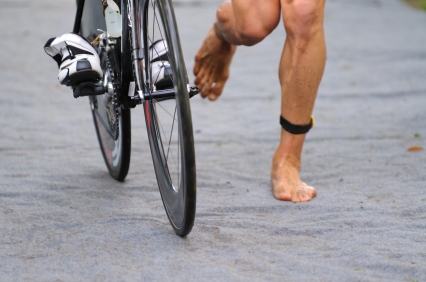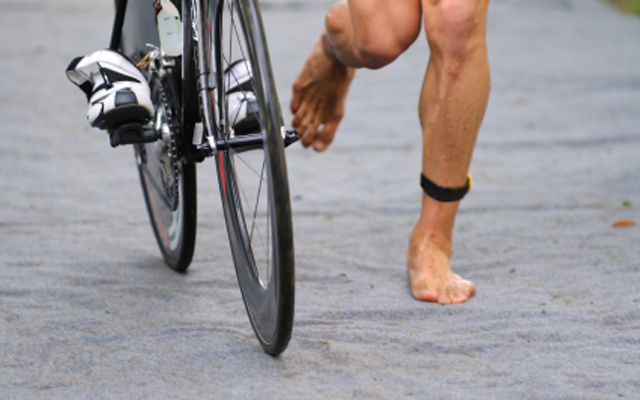
A pilot trial finds Isagenix helps triathletes maintain top condition to face unique challenges of running, cycling, and swimming.
Training as a competitive triathlete is demanding. Unlike other endurance athletes who train for one individual sport, triathletes must meet the unique challenges of running, swimming, and cycling in an all-day race. They work long, hard hours to keep their bodies in peak condition by maintaining a balance of little body fat, yet sufficient muscle mass and energy for top performance. Now, preliminary research suggests Isagenix products could assist triathletes in achieving a competitive edge.
The Colgan Institute, an educational and research facility, conducted an open-label pilot study that followed six male athletes of medium to elite status in training for an Olympic-distance triathlon on the Isagenix Cleansing and Fat Burning System for 30 days. In addition to their regular training—about four hours per day for six days per week—the participants also agreed to do an additional 30 to 40 minute of resistance training exercises daily in accordance with the Colgan Power Program. The program, developed by Michael Colgan, Ph.D., a member of the Isagenix Scientific Advisory Board, includes three sets of eight different resistance exercises in each workout (explained fully in Dr. Colgan’s The New Power Program).
At the beginning of the trial, the entire group was at less than 10 percent body fat, and had been so for some time prior to testing. By the end of the study, participants had lost an average of 4.2 pounds, decreasing body fat by an average of 3 percent, while increasing lean body mass by an average of 0.7 pounds or 2.8 percent.
“Many programs in which athletes rapidly lose body fat also show losses of muscle mass,” Dr. Colgan said. “The result is surprising as these are athletes who were already doing everything known in athletics to minimize body fat while maintaining muscle mass.”None of the subjects reported a decline in training. Three reported training improvements during the 30 days. Two reported improved sleep. No subject reported adverse events. No athletes competed during the trial; however, in the two months since completion, three of the athletes recorded significant gains in cycling performance, and two saw significant gains in running performance.
The standard distance triathlon, also referred to as the Olympic distance, includes a 1.5 kilometer swim, a 40 kilometer bike ride, and a 10 kilometer run. A triathlete’s ratio of body fat to lean muscle mass can mean a big difference in competitive performance in such an endurance event.
“The Olympic distance triathlon is a two-hour endurance event, during which performance is significantly affected by even small improvements in body composition,” Dr. Colgan said. “As these athletes were already in peak condition, this gain is exceptional.”
Isagenix Director of Research Susie Rockway, Ph.D., added, “Data from this preliminary trial added with the accumulating scientific evidence of whey protein’s stimulation of muscle synthesis, together, clearly shows that the ‘magic’ in Isagenix products offers an advantageous strategy to maximize healthy weight loss while preserving lean muscle—the key to improving body composition.”
Triathlete-style Cleansing and Fat Burning System
The athletes followed all the instructions for the Cleansing and Fat Burning System with a few modifications to meet training demands. The routine followed the typical schedule of Shake Days combined with one Cleanse Day every seven days. In total, the products taken included the following:
- IsaLean® Shake: A high-protein meal replacement taken twice daily to replace two meals per day, except on Cleanse Days.
- Ionix Supreme: Proprietary herbal drink containing adaptogens taken daily to support the body under stress.
- Cleanse for Life: Proprietary herbal drink taken only on Cleanse Days to support natural detoxification.
- Natural Accelerator: Supplement taken daily to support natural thermogenesis (fat burning).
- IsaFlush!®: Supplement containing herbs plus magnesium taken daily to assist bowel regularity.
Prior to the program, participants maintained an average food intake of 4,100 to 5,200 calories per day with an average 20 percent protein, 65 percent carbohydrate, and 15 percent fat. To not compromise caloric needs of training, modifications were made to Shake Days where the one single, evening meal contained 1,500 to 2,000 calories instead of the indicated 400 to 600 calories.
The meals on Shake Days consisted of predominantly fish and multiple fresh fruits, vegetables, nuts, and seeds. No breads or cereals were consumed, and fats were mostly from unprocessed nuts, seeds, and vegetable and fish oils. The athletes also continued their personalized supplementation programs, which included vitamins and minerals during the trial.





